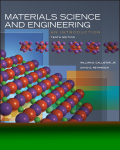
Materials Science And Engineering
10th Edition
ISBN: 9781119405498
Author: Callister, William D., Jr, RETHWISCH, David G., Jr., 1940- Author.
Publisher: Wiley,
expand_more
expand_more
format_list_bulleted
Question
Chapter 22, Problem 1DP
To determine
To list:
The advantages and disadvantages of the various materials that are used for the container production with the consideration of following aspects:
- Cost of the containers;
- Recyclability of the containers;
- Energy consumed for the production of these containers.
Expert Solution & Answer
Answer to Problem 1DP
The commonly used materials for the production of containers are listed below;
- 1. Glass
- 2. Aluminum
- 3. Polyethylene terephthalate (PET or PETE)
The advantages and disadvantages of these materials are explained below:
Explanation of Solution
Glass:
Advantages:
- Glass is an inexpensive material and it is readily available.
- It is chemically non-reactive material.
- It is the transparent material that gives a good appearance.
- The recycling process of glass does not require much energy.
- Increased and rapid production of recycled glass result in more usage and thereby reducing the pollutant emission.
Disadvantages:
- Glass is a non-bio degradable material.
- Sorting of salvaged glass takes more time and is an expensive process that reduces its market value.
Aluminum:
Advantages:
- Aluminum is a non-corrosive material compared to ferrous materials.
- Aluminum is easily available material.
- It has the capacity to withstand higher temperatures.
- Low energy is required to recycle the aluminum containers.
Disadvantages:
- They are non-refillable.
- Aluminum is the non-bio degradable material.
- It promotes the chemical reaction between the packed material and container. Tin coatings are provided to stop the chemical reaction.
Polyethylene terephthalate (PET or PETE):
Advantages:
- They possess good optical clarity.
- It is the light-weighted material compared to the others.
- It is a shatter-proof material.
- The PET containers are easy to manufacture (blow molding).
- It is chemically non-reactive material.
Disadvantages:
- They are non-refillable.
- PETs are the non-biodegradable materials.
Want to see more full solutions like this?
Subscribe now to access step-by-step solutions to millions of textbook problems written by subject matter experts!
Chapter 22 Solutions
Materials Science And Engineering
Knowledge Booster
Recommended textbooks for you
 MATLAB: An Introduction with ApplicationsEngineeringISBN:9781119256830Author:Amos GilatPublisher:John Wiley & Sons Inc
MATLAB: An Introduction with ApplicationsEngineeringISBN:9781119256830Author:Amos GilatPublisher:John Wiley & Sons Inc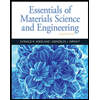 Essentials Of Materials Science And EngineeringEngineeringISBN:9781337385497Author:WRIGHT, Wendelin J.Publisher:Cengage,
Essentials Of Materials Science And EngineeringEngineeringISBN:9781337385497Author:WRIGHT, Wendelin J.Publisher:Cengage,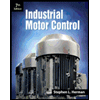 Industrial Motor ControlEngineeringISBN:9781133691808Author:Stephen HermanPublisher:Cengage Learning
Industrial Motor ControlEngineeringISBN:9781133691808Author:Stephen HermanPublisher:Cengage Learning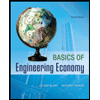 Basics Of Engineering EconomyEngineeringISBN:9780073376356Author:Leland Blank, Anthony TarquinPublisher:MCGRAW-HILL HIGHER EDUCATION
Basics Of Engineering EconomyEngineeringISBN:9780073376356Author:Leland Blank, Anthony TarquinPublisher:MCGRAW-HILL HIGHER EDUCATION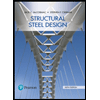 Structural Steel Design (6th Edition)EngineeringISBN:9780134589657Author:Jack C. McCormac, Stephen F. CsernakPublisher:PEARSON
Structural Steel Design (6th Edition)EngineeringISBN:9780134589657Author:Jack C. McCormac, Stephen F. CsernakPublisher:PEARSON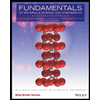 Fundamentals of Materials Science and Engineering...EngineeringISBN:9781119175483Author:William D. Callister Jr., David G. RethwischPublisher:WILEY
Fundamentals of Materials Science and Engineering...EngineeringISBN:9781119175483Author:William D. Callister Jr., David G. RethwischPublisher:WILEY

MATLAB: An Introduction with Applications
Engineering
ISBN:9781119256830
Author:Amos Gilat
Publisher:John Wiley & Sons Inc

Essentials Of Materials Science And Engineering
Engineering
ISBN:9781337385497
Author:WRIGHT, Wendelin J.
Publisher:Cengage,

Industrial Motor Control
Engineering
ISBN:9781133691808
Author:Stephen Herman
Publisher:Cengage Learning

Basics Of Engineering Economy
Engineering
ISBN:9780073376356
Author:Leland Blank, Anthony Tarquin
Publisher:MCGRAW-HILL HIGHER EDUCATION

Structural Steel Design (6th Edition)
Engineering
ISBN:9780134589657
Author:Jack C. McCormac, Stephen F. Csernak
Publisher:PEARSON

Fundamentals of Materials Science and Engineering...
Engineering
ISBN:9781119175483
Author:William D. Callister Jr., David G. Rethwisch
Publisher:WILEY